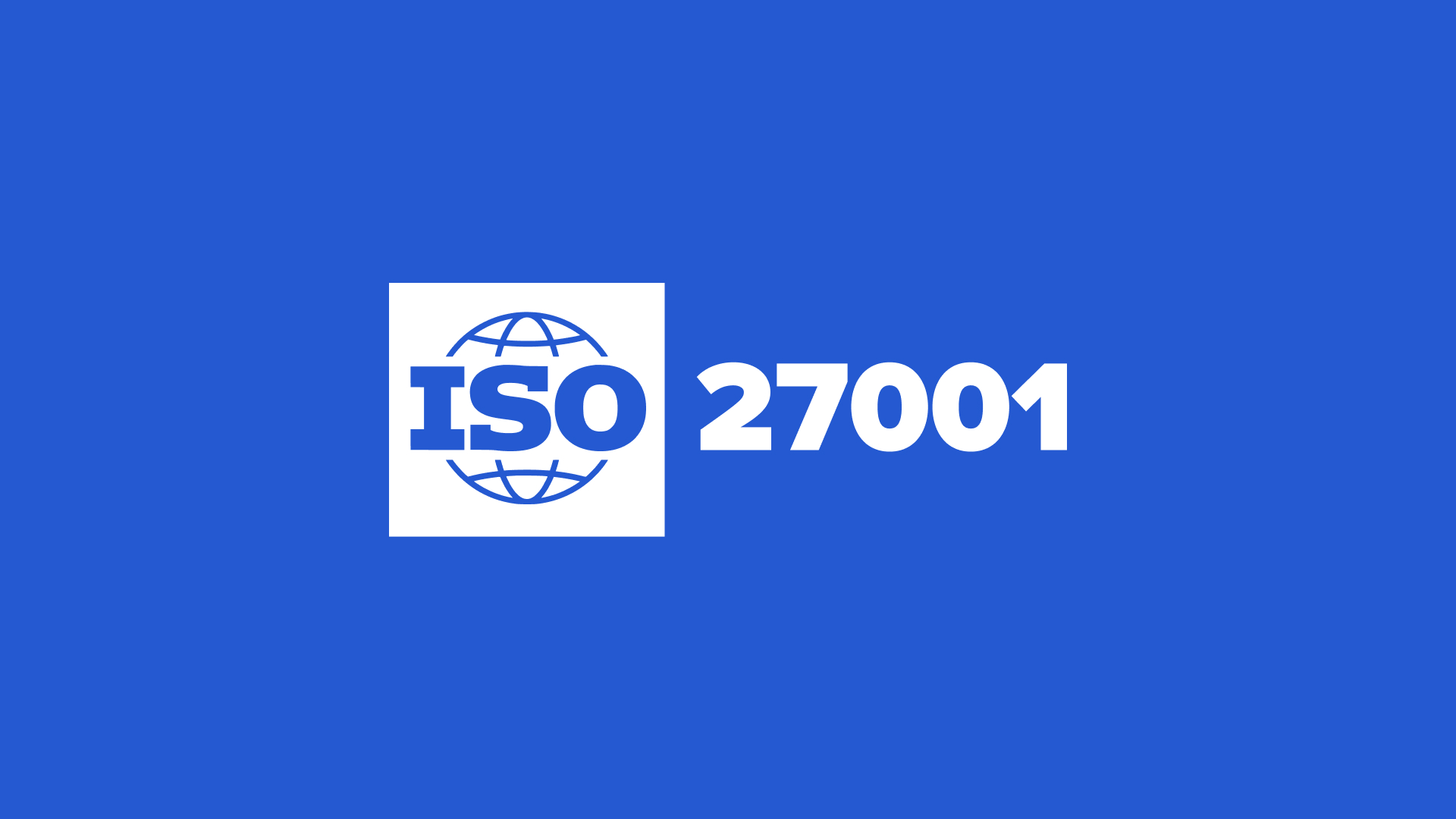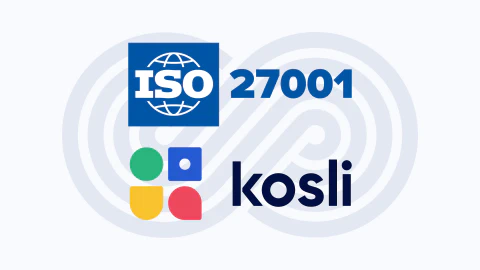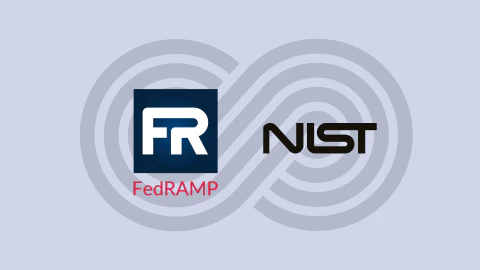Let’s talk about what ISO 27001 compliance means for the tech team.
If you’re a CTO, DevOps team lead, or cyber security specialist, you’ll have a lot of plates spinning at any given point in time.
You need to ensure and maintain security protocols and compliance without hindering the development team’s ability to test and deploy new code (often at scale). It’s a constant battle to align development speed with governance tasks like audit, compliance, and security.
So, one of the last things you need is the extra friction involved with achieving an ISO27001 certification. If you’ve been through this, or you’re going through it right now, one of the first things you’ll notice is that the standard is super vague. What are you meant to do exactly?
Audit and compliance for ISO 27001 can be cumbersome, requiring the collection of manual evidence, an abundance of checklists and change board meetings, and the implementation of rigid processes. The good news is that we have a great solution for the change management part of the audit that can help you achieve compliance without interfering with your delivery process.
The Basics
Before we dive in, we want to give you a quick look at what we’ll be discussing.
The tl;dr is this: You need to define a software delivery process, implement it, and then provide proof that you’re following the process.
First is defining a process. If you’re having trouble with this we have an open source SDLC template in a public repo that you can fork.
Now you have to implement and prove that you’re following the process. Usually this is a real pain involving screenshots, spreadsheets, logs, Jira tickets, etc. But if you don’t want to do that you can use Kosli to record all the evidence automatically.
It’s the compliance equivalent of the Staples Easy Button to help you get through the change management part of the standard in Annex A without disrupting your existing tools or processes. We helped Oyvind Fanebust, the CTO at Stacc, achieve his ISO27001 audit in a pain-free, tear-free way— and we can do the same for you.
What is ISO 27001?
ISO/IEC 27001 (also frequently called “ISO 27001”) is the world’s most-used standard for information security management systems (ISMS) requirements.
The requirements detail guidance for developing, implementing, maintaining, and improving your ISMS while maintaining security standards. It’s an international standard that involves regulating processes, technology, and the workflows your team uses.
It has three core principles: availability, integrity, and confidentiality of data.
It’s considered a good business practice for all companies (regardless of size or industry) to comply with ISO 27001 standards. That being said, it’s a requirement for some, including businesses that meet the following criteria:
- Conduct work outside of North America
- Finance businesses
- Healthcare businesses
- Telecom businesses
Why ISO 27001 Compliance is Significant in Today’s Digital World
ISO 27001 compliance is the practice of maintaining all requirements of the international standard— and it’s more important today than ever before.
The ISO27001 compliance is generally considered to be a good business practice, regardless of whether you’re in a regulated industry or not. Data security is vital for all businesses, because it can protect your proprietary information along with sensitive customer information.
Cyber security is constantly evolving, and new threats emerge regularly— and sometimes both internal and external workers present significant threats. Having policies and tools in place to ensure compliance and maintain security best practices benefits your entire organization, protecting it from potential data theft or damage, hits on your brand reputation, and even potential lawsuits.
Benefits of Achieving ISO 27001 Compliance
If you’re ISO 27001 compliant and certified, you can expect the receive the following benefits:
- Better overall security posture, and you can be confident knowing that your security practices are up to an international standard
- Establish trust with customers and stakeholders
- Create a strong reputation for reliability and competence
- Reduce risks and errors thanks to extensive security practices, which often include measures to reduce manual mistakes
- Be adaptable to any security failure or breach in a minimal amount of time
What Makes a System ISO 27001 Compliant?
ISO 27001 standards require that management does the following:
- Systematically and regularly examine the business’s information security risks, including documenting threats, impacts, and potential vulnerabilities
- Develop and implement information security controls and risk management to address unacceptable and high-threat risks
- Adopt management and training processes (and tech) that ensures that information security controls maintain security needs moving forward
If you meet the ISO 27001 standards and pass an audit, you can become certified as ISO 27001 compliant. This is often appealing to stakeholders, potential investors, and customers alike. You can, however, be ISO 27001 compliant without ever completing the certification process.
Key Components of ISO 27001 Compliance
ISO 27001 compliance involves the following key components:
- Scoping. You need to review the full extent if your information management systems and your security programs. What information and systems are protected, and which are not?
- Risk assessment. Conduct a risk assessment to look for potential vulnerabilities. Consider which are most likely to be at-risk for cyber security threats, and which are “unacceptable,” meaning they must be resolved.
- Gap analysis. This is a high-level overview that determines that needs to be done to ensure compliance and qualify for certification.
- ISMS development. Your team will develop clear processes, including training, testing, and deployment protocols, to ensure ISO 27001 compliance and information security best practices.
- Certification decision. When you’ve completed all the necessary steps for 27001 compliance, you’ll go through an audit, provide evidence of compliance, and apply for certification. An accredited organization can award or deny certification.
We’ll discuss some of these components more in-depth in the next section, as some are vital parts of the certification process.
The ISO 27001 Certification Process
The ISO 27001 certification process can be extensive (though we’ll talk about how Kosli can simplify it significantly in a few sections!), and it involves multiple different steps. Let’s go through the different phases of applying for certification.
Phase 1: Creating a Project Plan & Reviewing Your Scope
At this point, define and document the process that you’ll use to complete the certification process. You’ll want to have your entire team on board, including CTOs, DevOps leaders, and security specialists.
The first thing you need to do during the 27001 certification process is to get a basic idea of where you’re at now.
You need to review:
- What information management systems you have, and what data is stored where
- The security systems and processes you have in place, and whether those cover your full ISMS.
- Your current DevOps and implementation processes
- Your security tools and how they integrate with your tech stack, including DevOps and programming tools
Phase 2: Perform a Gap Analysis & Risk Assessment
After you’ve compiled a list of your entire information systems, you need to start by conducting a risk assessment.
This process will involve the following:
- Establish criteria for evaluating and prioritizing risks
- Review your entire information system (including processes, hardware, information databases, and intellectual property) for potential security risks.
- Document all found risks, and consider which present the most significant, immediate, or unacceptable threats
- Prioritize risks for immediate resolution, and flag others for later remediation.
After your initial risk assessment, your gap analysis will evaluate current performance compared to where you need to be to complete certification.
You may realize, for example, that there are workflow processes in your DevOps or QA team that are opening you up to risk that go against ISO security standards.
The gap analysis will help you determine what processes need to be changed and how far you have to go.
Phase 3: Develop & Implement Security Policies
The third phase of ISO cyber security certification is to develop and implement new security processes, policies, training, and tools based on the gap analysis results.
Document all new security policies and processes, and make sure that your CTO and DevOps leaders fully understand what’s changing and why. You may choose to find continuous compliance tools like Kosli to help you monitor your team’s compliance and flag issues as they arise.
Once you’ve got the polices in place, start training your team and integrating any new tools into your tech stack. At this point in the process, you may also remediate some existing security vulnerabilities that are high-risk.
Phase 4: Conduct an ISO 27001 Audit
Once all this has been done (and documented), you can apply for ISO 27001 certification.
An external ISO 27001 auditor will first review your ISMS documentation. They’re looking to ensure that you have the needed policies and procedures in place to minimize security threats and to maintain ongoing compliance.
After they do this, they’ll review your business processes and security controls.
This is an extremely extensive process if you’re gathering data manually. If you already have Kosli installed in your pipelines, however, you can simply export the audit train for all deployments to a single CSV file, which has all the data needed without requiring you to comb through CI logs, deployment logs, GitHub issues, and more.
There’s no need to pull together evidence from CI logs, deployment logs, and third-party apps: You’ll have the information in one place, ready to go.
If you pass, you’ll receive ISO 27001 certification. Once awarded, your certification is valid for three years; after that, you can apply for recertification.
Phase 5: Maintain Ongoing Compliance
Once you receive your certification, the work isn’t over. Your team must maintain ongoing compliance, which includes conducting internal audits regularly and keeping up with all of the security processes and practices that got you certification to begin with.
And since cyber security threats are always evolving— and since no human is perfect, and many large businesses have DevOps teams rolling out dozens or even hundreds of deployments on a regular basis— continuous security monitoring is invaluable.
Common Challenges of ISO 27001 Certification & Implementation
There’s no denying that the ISO 27001 implementation and certification process can be practically migraine-inducing if you’re doing it manually. It can be difficult to know where to start or what issues to flag, and the data collection alone is time-consuming and cumbersome.
Many businesses also worry that they’ll be faced with strict overhauls of their existing work processes in a way that creates a too-rigid work environment that slows their team down and inhibits productivity. This is a common fear, and often becomes a central discussion in change board meetings.
Some CTOs actually delay certification because of the headache they think it will be, but the good news is the right tools can help.
Implementing ISO 27001 Pain-Free with Kosli.com
Kosli helps with change management aspects of ISO 27001 compliance standards.
What this means is that if you’re delivering software and are applying for the ISO 27001 certification, you’ll need to have two things:
- A defined process for delivering software
- The ability to prove that you’re following that process
Traditionally, this means manually recording evidence of all of your risk and change controls. You need to document and screenshot test results, storing them in your ITSM system, and have them ready for analysis.
Here’s where Kosli comes in: We’ll capture the evidence for you in real-time, almost like a flight data recorder. We’ll use cryptographic fingerprints of commits and artifacts, and then attach test evidence to those finger prints. This can prove that you’re following security processes with automation.
This is how we help clients like Stacc pass their ISO 27001 certification quickly and efficiently. We integrated with all of their processes and tools, automated evidence gathering, and were able to demonstrate proven compliance without the hassle of paperwork, meetings, or delays. And the best part— we did it all without changing their existing workflows and slowing down DevOps production.
Read the full case study here.
Final thoughts
ISO security standards compliance is a great standard to follow, as it’s internationally recognized and developed by two organizations: The International Organization for Standardization and the International Electrotechnical Commission.
And while certification used to be a difficult and stressful process, it doesn’t have to be anymore. Kosli can automate and streamline the entire change management part of the certification audit, helping you get certification faster and easier than ever before.
Ready to monitor your compliance and get ready for certification? Get started with Kosli for free!
















